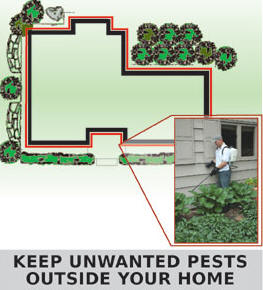What is the proper way to mow my lawn?
Mowing your lawn frequently at one of the highest notches on
the mower deck is one of the best practices overlooked by many
homeowners. This not only shades the soil surface to retain
moisture, but this also crowds out weed competition, and gives the
lawn a thicker, darker green look. Cutting on the lower notches of
your mower weakens turf and makes it continually struggle.
What is the proper way to water my lawn?
Proper watering for most types of grasses in Iowa for established
lawns is to water deeply and infrequently. This typically is 1 - 1.5
inches of water per week during spring and fall months, and 2 - 2.5
inches of water during summer months. This should be distributed
between 2-3 waterings per week, unless rainfall is adequate.
Can I let my lawn go dormant in the summer months?
Letting your lawn go completely dormant during periods of extreme
heat is never recommended. It is understandable that homeowners
without automatic sprinklers would have a much tougher time keeping
up with watering for extended periods of time. The facts are most
lawns can go through roughly 2 weeks without rainfall during hot
periods with no major problems. Anything beyond this will lead to
areas that die and won't regrow. After this happens weeds and
undesirable grass will invade areas that have declined, not to
mention weak turf also invites insect and disease damage. It is much
easier and less expensive to maintain a healthy lawn than it is to
completely renovate the turf after damage has occurred.
When and how often should I aerate my lawn?
All lawns benefit from annual core aeration. It must be a machine
that actually pulls cores of soil and deposits them on the surface.
Other types of aerators with spikes on them that push soil downward
only compact soil, and serve no purpose. Fall is by far the best
time to aerate your lawn, and there are many reasons. Aerating
before the last fertilizing of the year is the allowing the grass
roots to take in the most valuable feeding of the year when your
lawn naturally is storing up food to go dormant for the winter. If
you have areas that need to be reseeded that have struggled through
the summer months, aerating before seeding is a great way to
reestablish the lawn. Aerating during the fall is much better than
spring simply because there is much less weed break through in the
fall when the surface is opened up. First thing in the spring is
also when fertilizer with crabgrass preventer goes down and if the
surface is opened up, the crabgrass preventer does not work as well.
I have many trees in my yard, and can't seem to get grass to grow
anywhere near them. What can I do?
Many times trees in your yard will compete with your lawn for
moisture and nutrients. This along with the extra shade, makes it
very difficult to establish and maintain grass. There are many
factors that can improve your chances in these areas. Limbing up the
existing trees will allow more light to get to the surface. Due to
the extra moisture that trees will absorb from those areas, you will
need to do additional watering to the grass immediately surrounding
the trees. There are also certain types of grass that are more
conducive to shady areas. They will be designated as a shady mix. If
none of these options work for the area, then it might be time to
consider a different solution such as turning the entire area into a
landscaped mulch bed with plantings.
What is a
perimeter pest control service?
| Perimeter pest control put simply is a continuous chemical
barrier sprayed around the entire exterior foundation of your home.
We spray 2-3 feet up the foundation and 3-4 feet of soil leading up
to the foundation. This creates a barrier which keeps crawling pests
out of your home. This technique saves a tremendous amount of money
compared to traditional in home pest services. It also keeps the
treatment areas outside and away from living places.
Why pay for a traditional pest company to come into your home
to put chemicals inside your living spaces where your family
can be exposed to them. All bugs originate from the outside,
and with our proven perimeter pest control service, there is
typically no need for any interior treatments. The treatment
is colorless, odorless, doesn't stain, won't hurt plants or
animals, and gives up to 3 months protection per treatment for
hundreds of types of crawling insects. There is no need to be
home for this treatment either. To prepare for for a treatment
we ask that homeowners to close all first floor and basement
windows, as well as pick up any objects laying around the
foundation of the home. |
 |
|